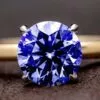When we think of colors, we often think of vibrant blue skies, bright greens and yellows, and other poppy fun colors.
While not so popular, the color white has deep cultural values that go all the way back to the first days of humankind.
Let’s take a look at some of the most interesting facts about this often forgotten color!
White is achromatic, meaning it has no hue. The only other color with this property is black.
In many western cultures, the color white symbolizes cleanliness, purity, and virginity. It’s because of this that wedding dresses are white.
The Pope has worn white since 1566. For the Pope, white symbolizes sacrifice and purity.
In India widows traditionally wear white.
The color white is actually considered a sign of mourning in many eastern cultures, where it’s also a sign of luck and the passage to the afterlife.
White is the most popular color among adults for physical environments, although it ranks pretty low as an overall favorite color.
There are no true shades of white in the way that other colors have shades. Instead, we have shades of off-white, such as ivory, cream, beige, and pewter.
When you see the color white on your TV, it’s not actually white – it’s a mixture of green, red and blue lights.
When Roman boys came of age, they were allowed to wear white togas called toga virilis, which were a symbol that they were now allowed to vote, marry, and form their own households.
Many languages have multiple words for a variety of shades of white. For example, there are seven words for seven different types of white in the Inuit language, and six in Japanese.
One of the first colors humans used for art was white. The earliest records of cave art using chalk are drawings of bulls in France that date back to 18,000 years ago.
There is no true white light. When we see the color white, it’s a mixture of many different colors at different ratios, and every source of “white” light emits a different ratio and mixture.
There is, however, a “true” white when it comes to objects or surfaces. When light hits a true white object, it reflects all the colors of the spectrum without absorbing any. This property makes it the lightest color.
A widespread European legend claims that stoats would rather die than let their snow-white coats get dirty. In reality, their coats are white in winter and reddish-brown in summer.
Muslim pilgrims wear white clothes when during their journey to Mecca.
In the Japanese religion Shinto, a place with white stones or gravel is sacred, as spirits dwell there.
White noise is named as such because, much like the color white, it’s a combination of all sound frequencies at once.
A white flag was officially adopted as a sign of surrender at the 1949 Geneva Convention. It was first used much earlier, though, during the 100 Years War between France and England in the 15th.
Until the 20th century, the color white in cosmetics was made from lead. However, alternative pigments were used after it was discovered that lead is highly toxic.
The most common natural pigments used to make the color white come from zinc oxide, titanium oxide, lime, and lead.
It’s pretty easy to see why the color white has so much symbolism surrounding it.
As the brightest of all colors, how could it not have profound importance?
And other than not being the most practical color for clothing, it’s a pretty brilliant color!


















